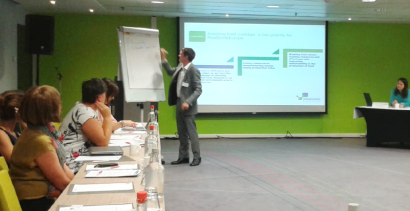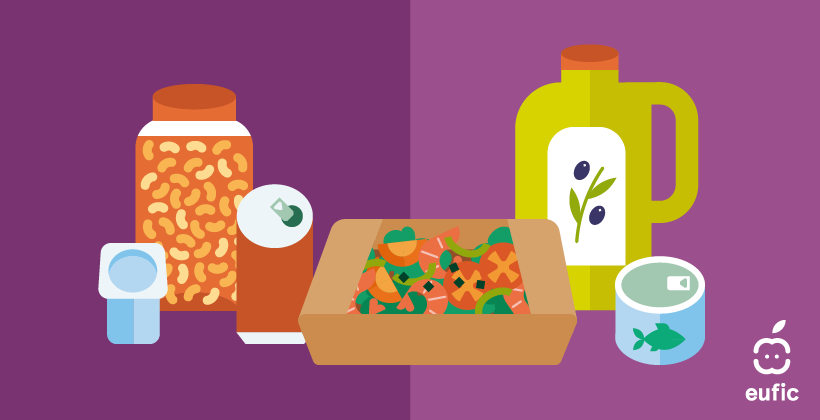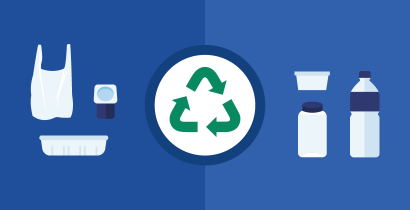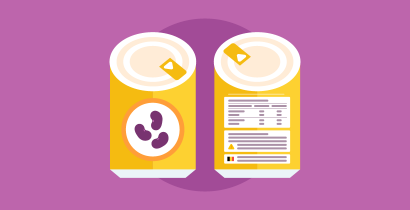Tackling food waste: turning nemesis into a saviour
Last Updated : 28 June 2018Dr Milka Sokolović is Head of Food & Health Science, European Food Information Council (EUFIC)
The function of food packaging has traditionally been limited to passive protection from external influences, but innovations are quickly changing its role. Packaging is getting active and intelligent, able to monitor and interact with food and environment and maintain food freshness for longer.
We waste a third of the food globally produced, half of which at the consumption level. At the same time, 2 billion of us are malnourished, 815 million chronically hungry. The math is clear: with 50% less waste, 15% more food becomes available – enough to feed those in need.
This fact alone, even without mentioning the environmental impact of food waste, makes a switch to a sustainable food supply chain an economic, environmental and ethical imperative.
It is of no surprise that sustainability tops the agenda of all major institutions. The UN’s 17 Sustainable Development Goals are set to end poverty, protect the planet, and ensure prosperity for all by 2030, with food waste and food safety playing an important role.
The Save Food Initiative of FAO brings together organizations from across the globe to act against the food loss and waste, while the European Commission and the Parliament commit to half the food waste by 2030.
In parallel, having the environment in mind, the EU strategy for Plastics in the Circular Economy aims at transforming the way plastics are being designed, used and recycled, pledging to make all plastics packaging in the EU recyclable by 2030.
The science of food packaging
Food waste reduction is not a goal on its own. It is critical for sustainable food systems, which will ensure food and nutrition security, economic growth and climate change mitigation. At the same time, food waste is a complex issue that requires an integrated multi-disciplinary approach, bringing together technology, economics, sociology, ecology, nutrition.
That is exactly the approach that the European Commission has taken when commissioning research to act on food waste and food safety and quality. Within the EU Horizon 2020 Framework Program, novel solutions in food packaging are being explored. Three of these research projects, namely NanoPack, YPACK, and RefuCoat, have recently been discussed at the Astana Global Challenges Summit 2018 as promising solutions to help feed the world’s growing population.
The function of food packaging has traditionally been limited to passive protection from external influences, but innovations are quickly changing its role. Packaging is getting active and intelligent, able to monitor and interact with food and environment and maintain food freshness for longer. It can, for instance, prevent food spoilage and extend shelf-life by releasing antioxidants, antimicrobials or oxygen scavengers.
To do this, the NanoPack project uses natural antimicrobial substances, which are incorporated into nanotubes that provide structure. Early results of the project have shown that such an active NanoPack film can increase bread’s shelf-life by three weeks, demonstrating a huge potential for food waste reduction.
Another solution to minimise the environmental footprint of packaging materials lays in the use of food industry by-products. YPACK project develops fully renewable and compostable bioplastics made from unpurified cheese whey and almond shells for packaging fresh products, like meat, fruits and vegetables.
Here, the potential of food waste reduction is combined with reducing the environmental impact of primary food production.
In parallel with a shift towards bio-based materials with lower environmental impact, there is an increased demand for fresh and minimally processed food. At the same time, market globalization requires food to be fresh for longer, bringing further challenges for food safety.
For fresh foods, the sturdy high-barrier packaging has been the gold standard, extending the shelf-life and allowing a minimal use of additives and preservatives. However, it suffers from low recyclability, due to layers made of different materials, often fossil-based.
To tackle this, the RefuCoat project develops a fully recyclable packaging based on biopolymers, combined with hybrid and active coatings, which will replace metallised films for wrapping cereals and savoury products. In parallel, a fully compostable packaging for fresh meat is in the making, with a “catch 22” – it will be possible to turn the container into a high-quality fertilizer, ensuring not only less waste but also soil improvement.
The difference makers
The innovation in food packaging is yet another illustration of how resourceful we are when in need of solutions. We are capable of dramatically transforming our environment, but even more importantly, we are capable of adjusting. Time and again, from the Agricultural to Digital Revolution, we’ve demonstrated that, when needed, we could take sharp turns and adjust our behaviour.
One such moment of need is now. Science offers amazing tools, but it is up to us to put them to use. It is equally up to us to find that sweet spot of a sustainable food chain that is equally good for the people, for the planet, and for the profits.
One may argue that food waste reduction in Western Europe would have little or no impact on hunger in Sudan. But each non-produced and non-wasted food product means less demand on production, fewer resources used, and lower environmental impact.
With the world being more connected than ever before, what today seems a hurdle in distribution is getting solved quickly, before our eyes, thanks to our power to fix and adjust.
It is not to say that food waste reduction on its own will solve the problem of hunger, but it will impact our own, and our planet’s existence in more ways than we can fathom. And it is every single one of us that this impact depends on.
Article published by Euractiv, 28 June 2018.



